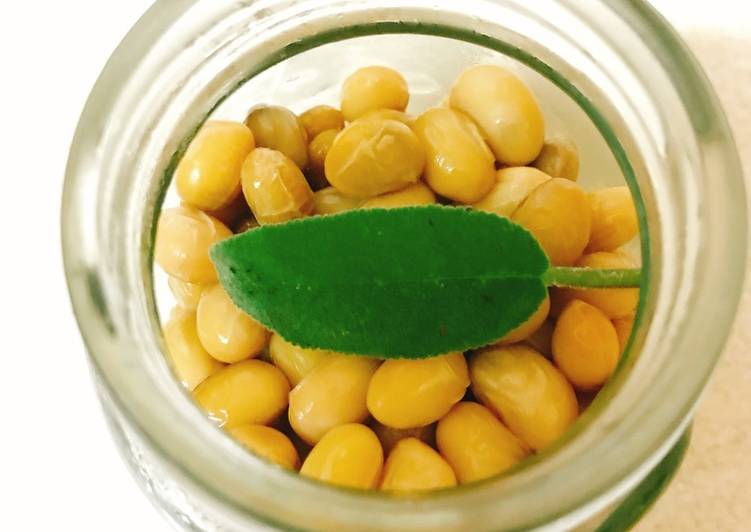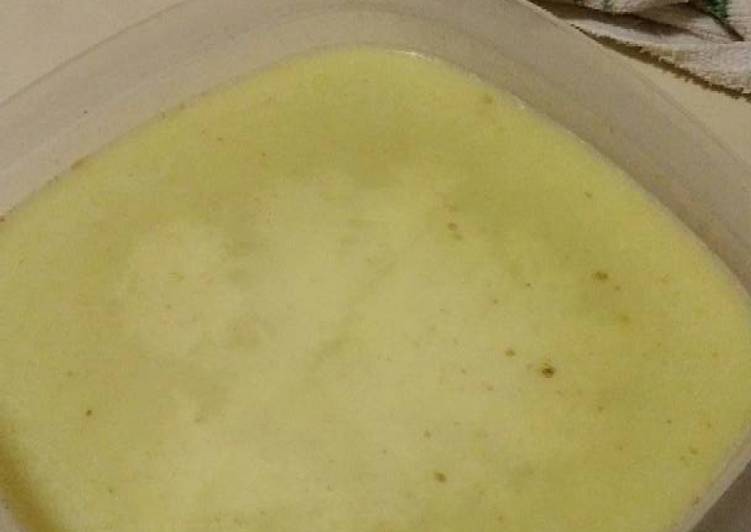
Hey everyone, it’s John, welcome to our recipe site. Today, we’re going to make a distinctive dish, natto, fermented soybeans with herbs. It is one of my favorites food recipes. This time, I will make it a bit unique. This is gonna smell and look delicious.
Natto, fermented soybeans with herbs is one of the most well liked of current trending foods on earth. It is simple, it is fast, it tastes delicious. It is enjoyed by millions every day. Natto, fermented soybeans with herbs is something that I have loved my whole life. They’re nice and they look wonderful.
Tofu, tempeh, miso and natto are all whole food forms of soybean. However, unlike many other soy foods, natto is fermented, which accounts for many of its health-promoting properties. Natto is a traditional Japanese dish composed of fermented soybeans. The taste of this pungent dish splits opinion, but it is incredibly popular in its homeland.
To get started with this recipe, we have to first prepare a few components. You can have natto, fermented soybeans with herbs using 3 ingredients and 13 steps. Here is how you can achieve it.
The ingredients needed to make Natto, fermented soybeans with herbs:
- Make ready 150 g dry soybeans
- Take any herb, my favourite is sage
- Take 1 yoghurt maker or proofer which keep the temperature around 38-43 degrees
Natto is one of soybeans product, it's fermented soybeans as known as slimy soybeans. If you don't know what it is, you might pass eating it, I believe. But, soybeans are not the only legumes you can make natto from. They are slimy and have a weird texture.
Instructions to make Natto, fermented soybeans with herbs:
- Wash dry soybeans thoroughly and soak in water overnight.
- Steam in a pressure cooker until soft enough to be crushed with your thumb and little finger. I steam for 35-45 minutes with the high-pressure steamer function of the multi-cooker. Or you could boil them with bean settings. If you cook with a normal pot, it will take 3-4 hours.
- When steaming, put the container used for fermentation, chopsticks, spoons, etc. to be used together to disinfect them at the same time.
- While steaming soya beans, wash the herbs thoroughly and quickly pass them through boiling water to kill any germs. I often use sage in my home garden.
- Drain the herbs that have been sterilized in boiling water. - - It is very important because it kills all bacteria other than Bacillus natto by the steaming process and by hot water.
- When the soybeans have steamed, take them out and leave them to cool down. - - Place the container for fermentation, which is sterilized with it, or on a clean cloth. Then, dry them.
- Spread the herbs on a dry and sterilised container.
- Soya beans are placed on top of it, and sage leaves that have been washed and boiled in hot water are placed on the soya beans. In other words, sandwich soya beans with herbs.
- Then, ferment for about 20-48 hours in a yoghurt maker or something which can be kept at 38-43 degrees. If possible, please set the temperature and time. I did at 40 degrees for 24 hours for this batch. The tastes will vary with the temperatures and the length of the fermentation.
- While fermenting, sterilize the containers and lids by steaming.
- From the second time onwards, the leaves with full of Bacillus natto can be reused, so please do not throw away the herbs you used.
- After having finished the fermentation process, remove the leaves and they should look like the photos below. When you open the lid, it smells sage slightly.
- Bacillus natto does not die even if it is sterilized by boiling, acid, alkali, vacuum, radiation, no nutrition source, even at -100 degrees, even if taken to space. So, once they have settled in the yoghurt maker etc, it becomes very difficult to make yoghurt in it. Your yoghurt becomes somehow smells of natto or sticky. So, I keep my yoghurt maker dedicated to natto making.
But, soybeans are not the only legumes you can make natto from. They are slimy and have a weird texture. Most people I talk to have either never heard of the food or dislike it. Natto was one of the few non-animal parts foods to make it into the book Yuck! Here is how that book describes natto: Sticky, smelly, slimy and with an unpleasant aftertaste.
So that’s going to wrap this up for this special food natto, fermented soybeans with herbs recipe. Thanks so much for your time. I am confident that you will make this at home. There is gonna be interesting food at home recipes coming up. Don’t forget to bookmark this page in your browser, and share it to your loved ones, friends and colleague. Thanks again for reading. Go on get cooking!

